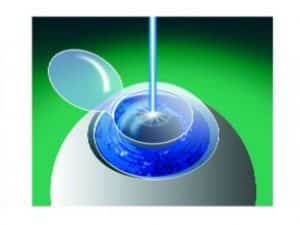IntraLase
IntraLase in Iran
Best IntraLase clinic in Iran
Best IntraLase hospital in Iran
Intralase Lasik is a type of laser eye surgery used to correct vision problems such as nearsightedness, farsightedness, and astigmatism. It involves the use of a femtosecond laser to create a precise flap in the cornea, which is then lifted to allow for the reshaping of the underlying tissue. This procedure is known for its high level of accuracy and safety and is offered at various eye clinics and hospitals in Iran.
- Noor clinic
- Negah clinic

IntraLase cost in Iran
There is a significant difference between the cost of IintraLase in Iran and other countries. The most important factors for its low price of it in Iran are:
- A large number of IintraLase clinics in Iran.
- A large number of applicants for IintraLase in Iran.
IntraLase cost in Iran in comparison with other countries
This surgery costs $4500 in the U.S., $2300 in Europe, $1900 in Thailand, and $2300 in Turkey.
Best IntraLase surgeon in Iran
One of the most important factors for choosing a good surgeon at IintraLase in Iran is the doctor has done many IintraLase surgeries.
You can find the best doctors for IintraLase in Iran on our website by following their experiences.
Why should you travel to Iran for an IntraLase?
Many patients travel to Iran for IntraLase. One of the reasons for this matter is Iranian specialists and ophthalmologists who have high surgery success rates.
- Low cost of IntraLase in Iran
- Low cost of accommodation in Iran
- Well experienced doctors
- The high number of IntraLase in Iran
Diagnostic and surgical centers accordance with today’s European standards is performing the highest quality operations in Iran. Another reason for IntraLase in Iran is its lower cost compared to other countries.
How long should I stay for IntraLase in Iran?

About IntraLase in Iran
IntraLase or bladeless LASIK is a new state of art laser treatment that prepares the LASIK corneal flap by using a femtosecond laser. Although advancements are made in laser eye treatment every year, the introduction of IntraLASIK bladeless LASIK is the most significant leap in technology since the introduction of standard LASIK in the UK in 1998. It is a bigger advancement than the introduction of wavefront-guided technology. This “No Blade” procedure produces a flap that is much more precise and in-depth, cleaner, more accurate, and thinner, and it results in many benefits to the LASIK patient. The major benefit is that all suitable prescriptions can now be treated with bladeless technology, thus eliminating the induced distortion and possibility of serious complications associated with the creation of the flap by the manual blade. More patients achieve 20:20 vision or better; fewer patients lose the sharpness of vision. Both short-term and long-term safety is improved. Increased confidence for both the doctor and patient lessens stress and anxiety. Both mechanical breakdown and human error are reduced. IntraLase and Wavefront (Combined) Customised Wavefront treatment (CATZ) has been limited in its ability to eliminate optical imperfections in LASIK by its inability to correct induced imperfections caused by the mechanical cutting of the flap made after it had analyzed the eye. Now induced imperfections have been substantially reduced. Wavefront promises to improve the sharpness of vision for patients, above the quality of vision glasses, can achieve. IntraLase Recommended For:
- Patients with up to -11.00 diopters of nearsightedness, up to +5.00 of farsightedness, and up to 5.00 of astigmatism.
- Persons who are looking to get rid of the continual cost and side effects involved in glasses and contact lens use.
- Athletes who require the freedom offered by refractive surgery.
Before IntraLase
Before IntraLase eye surgery, a patient will meet with an eye doctor to go through medical history taking and the eyes will be thoroughly examined; Likely initial tests include measuring corneal thickness, refraction, corneal mapping, eye pressure, and pupil dilation will be done.
During IntraLase in Iran
First, an ultra-fast femtosecond laser is used to create a thin flap in the cornea, the clear front surface of the eye. Then, an excimer laser is used to reshape the underlying corneal tissue to correct the vision. The flap is then returned to its original position.

IntraLase Recovery
There may be pain or a foreign body sensation, particularly during the first 48 hours after surgery that is normal. Patients should be careful not to rub their eyes. The surgeon may place a transparent protective shield over the eye to help protect the cornea as it heals. The IntraLase recovery time will be as early as six months for the correction of their vision. The corneal flap will be secured in as early as two weeks and heals fast, as long as the patient is strictly following the surgeon’s advice in securing their eyes.
FAQ
Intralase is a laser technology used in LASIK eye surgery to create a corneal flap. It uses a femtosecond laser to create a precise, thin flap in the cornea, which is then lifted to allow for reshaping of the underlying tissue.
Yes, Intralase is available in Iran. There are several clinics and hospitals that offer this technology for LASIK eye surgery.
Yes, Intralase is considered safe and effective for LASIK eye surgery. It has been approved by the FDA and has been used in millions of procedures worldwide with a high success rate and low risk of complications.
Resources: